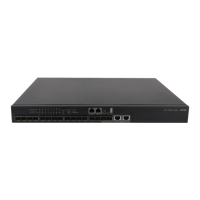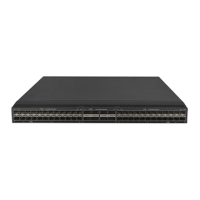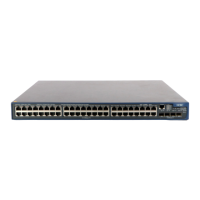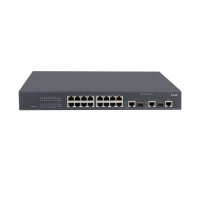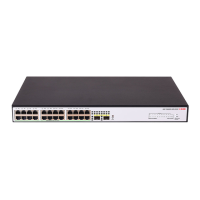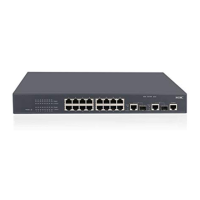41
a. If the statistics are not zero, the following issues might have occurred:
− Inconsistent configuration—Verify that the local and peer ports have the same
configuration (including speed and duplex mode). If they are not the same, modify the
configuration of the local port.
− Interface hardware failure—To test such a failure, connect the cable that is connected
to the local port to a correctly operating port (for example, Port A) with the same
configurations as the local port. If Port A forwards traffic correctly, you can determine
that the hardware of the local port fails. In this event, you must replace the local port with
a correctly operating port.
− Transceiver module, fiber, or twisted pair failure—To test and resolve such a failure,
replace the transceiver module, fiber, or twisted pair with a good one.
b. If the issue persists, contact H3C Support.
When you contact H3C Support, provide the following diagnostic information if packet loss
occurs on the chip port with which the interface is associated:
2. Verify that packets are not mistakenly filtered out by ACLs:
a. Examine the ACL and QoS policy configurations for packet filtering on the port, on the VLAN
of the port, or globally. If packets are mistakenly filtered out, modify the ACL or QoS policy
configuration.
− To display the ACL configuration on the port for packet filtering, execute the display
packet-filter command.
− To display the QoS policy configuration on the port, execute the display qos policy
command.
− To display the QoS policy configuration on the VLAN of the port, execute the display
qos vlan-policy command.
− To display the global QoS policy configuration, execute the display qos policy
global command.
b. Verify that packets are not filtered out by ACLs automatically created by some features.
− Execute the display this command in Ethernet interface view to verify that the ip
source binding or ip verify source command is configured on the port. To
display source guard binding entries, execute the display ip source binding or
display ipv6 source binding command. If IP source guard is configured but the
packets match no entry, further troubleshoot the issue based on the way the binding
entries are created.
− Determine whether the port is configured with the portal authentication. If portal
authentication is configured, packets of users that fail to pass the portal authentication
will be dropped by the port. Use the display portal interface command to display
the portal configuration information of the specified VLAN interface. Determine whether
the portal authentication can be disabled based on the network conditions. To disable
the portal authentication, use the undo portal server server-name comm
and in
VLAN interface view of the VLAN to which the port belongs.
− Use the display dot1x command to check whether 802.1X EAD assistant is enabled
on the interface.
If 802.1X EAD assistant is enabled on the interface, packets will be discarded for
unauthenticated users who access the network segments other than the Free IP.
− Determine whether MFF is configured on the VLAN to which the port belongs. Use the
display mac-forced-forwarding vlan command to display the MFF information
of the specified VLAN. If no gateway information is displayed in the output, verify that
ARP snooping is correctly configured based on the MFF operation mode.
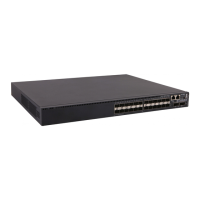
